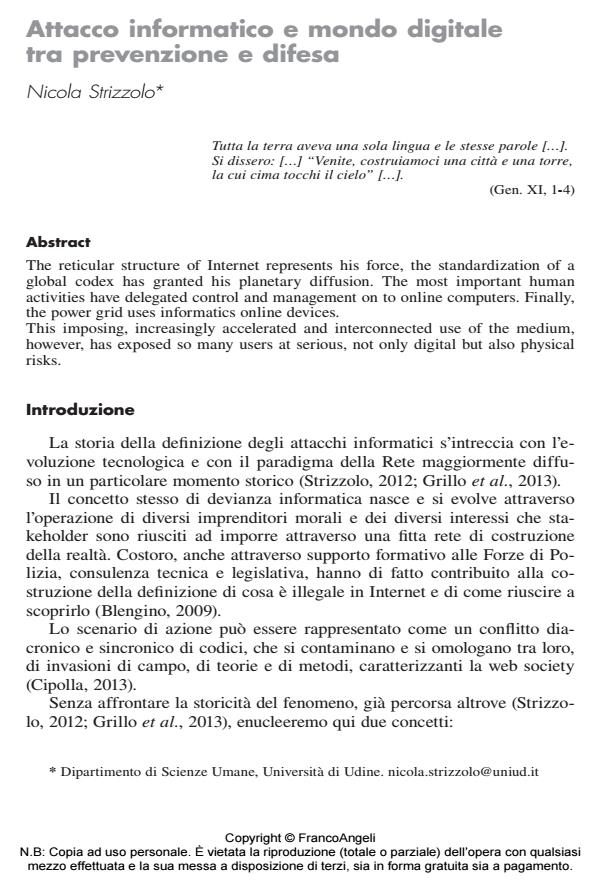Attacco informatico e mondo digitale tra prevenzione e difesa
Journal title SICUREZZA E SCIENZE SOCIALI
Author/s Nicola Strizzolo
Publishing Year 2014 Issue 2014/1
Language Italian Pages 15 P. 38-52 File size 117 KB
DOI 10.3280/SISS2014-001004
DOI is like a bar code for intellectual property: to have more infomation
click here
Below, you can see the article first page
If you want to buy this article in PDF format, you can do it, following the instructions to buy download credits

FrancoAngeli is member of Publishers International Linking Association, Inc (PILA), a not-for-profit association which run the CrossRef service enabling links to and from online scholarly content.
The reticular structure of Internet represents his force, the standardization of a global codex has granted his planetary diffusion. The most important human activities have delegated control and management on to online computers. Finally, the power grid uses informatics online devices. This imposing, increasingly accelerated and interconnected use of the medium, however, has exposed so many users at serious, not only digital but also physical risks.
- The Social Dimension of Cybersecurity in the Public Media Systems of Poland and Italy Anna Makuch, Nicola Strizzolo, in Cybersecurity and Law /2024 pp.200
DOI: 10.35467/cal/188449 - Information Society Services and Their Cybersecurity András Bencsik, Mirosław Karpiuk, Nicola Strizzolo, in Cybersecurity and Law /2024 pp.258
DOI: 10.35467/cal/188446
Nicola Strizzolo, Attacco informatico e mondo digitale tra prevenzione e difesa in "SICUREZZA E SCIENZE SOCIALI" 1/2014, pp 38-52, DOI: 10.3280/SISS2014-001004